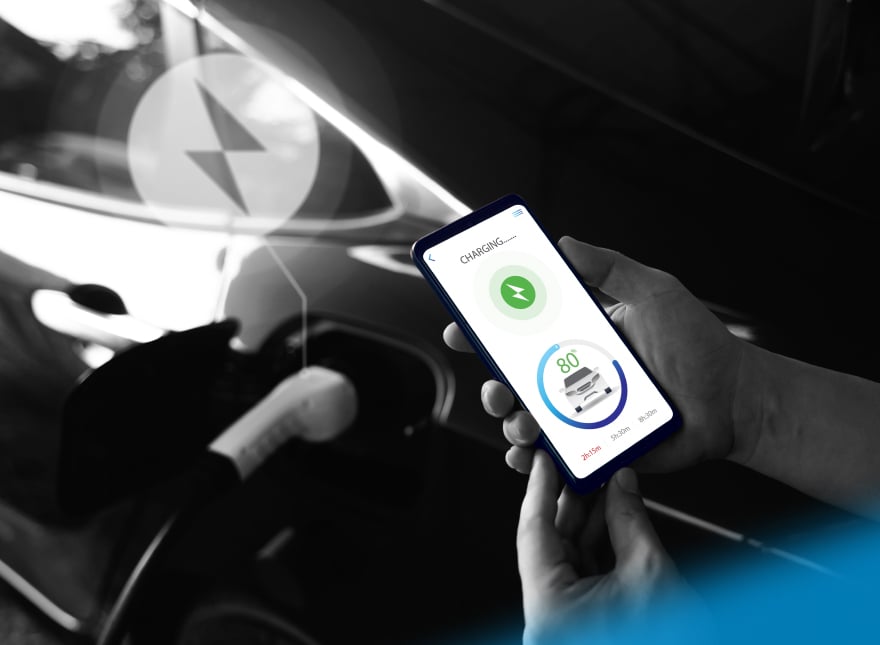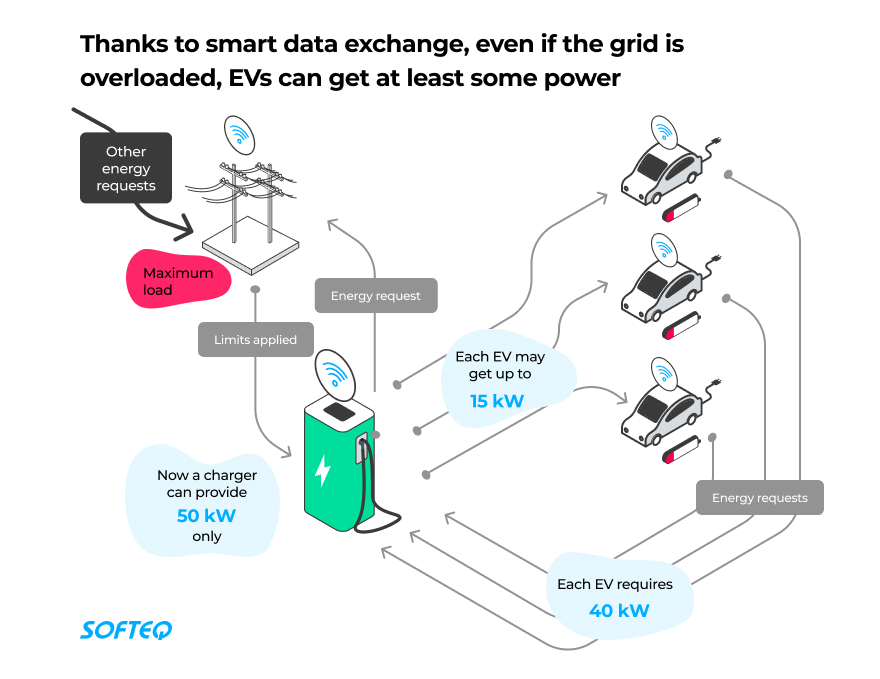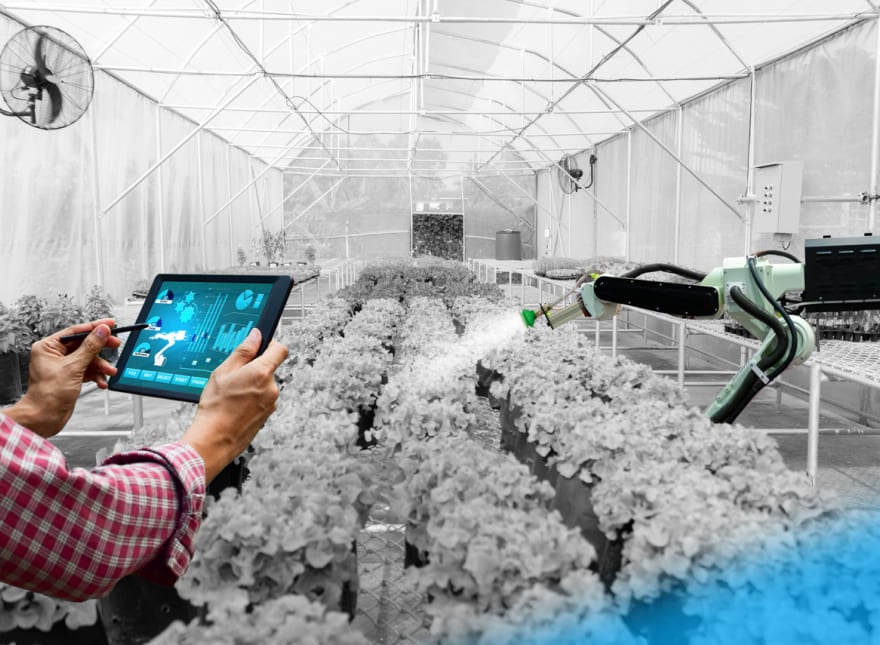Check out our latest blog article: From component to enterprise – modular robotics done right.
Game-changer for OEMs: How Smart Charging Can Boost Electric Vehicle Sales

Do you know how consumers see the process of charging for electric vehicles—smart or not really?
I bought my first EV model two years ago. And like many others, I was thinking about my impact on the environment and the well-being of the whole community. If I can contribute to a better future for next generations by simply switching to an electric car, why would I hesitate?
I have seen a lot since then. Closed stations with an ”out of service” sign due to the overloaded power grid. Queues at charging points downtown. Blackouts in the neighborhood where I once plugged in my EV at night. I couldn’t avoid asking myself: Do I care about the common good—or do I become a nuisance to the neighbors? Are green EVs really green—or do we have to wait decades till they truly become so?
In my opinion, we won’t proceed with EV adoption if we stick to charge points as we know them today. Smart grid, electric vehicle charging, and data exchange are the cornerstones of the green vehicle notion no less than the electric car itself.
Why Smart Charging Will Win the Battle Among EV Charging Management Systems
The problem is not about a shortage of charging stations. Otherwise, the solution would be so simple. We install a charging station at every corner and expect that tomorrow our EV sales will skyrocket.
The problem with traditional charging points is more complex. They can't handle fluctuating energy supply effectively. They are in between energy suppliers and consumers. From the supply side, multiple energy sources—solar panels, wind farms, CHP systems, and others—create natural peaks and troughs. From the consumer side, the growing number of EVs increases the risks of overloading a power grid. And finally, these fluctuations from both sides may reinforce each other whether coming together or apart.
And smart charging technologies come as a solution. They are able to stabilize an imbalance between produced and consumed power. This is achieved through creating a single ecosystem where EVs, chargers, and local energy grids communicate and exchange data.

The interconnected system allows systems to:
- Share their real-time data: how many EVs are waiting to be charged, what will be the stress on the power grid, and so on
- Automatically specify how much energy to give to a plugged-in EV
As a result, they make optimal use available in a certain time period. No more hassle about the unprotected grid during peak loads or exceeded energy capacity.
Smart charging can be useful for the following stakeholders:
- Consumers who own an EV
- Businesses that run EV-equipped fleets
- Public authorities in charge of urban infrastructure
Here are three stories with real-life use cases where smart charging replaced traditional EV charging. Each story tells about one of the stakeholders.
Use Case 1: Fleet EV Charging
More and more businesses and public services are turning to EVs in their fleet. For example, delivery services, public buses, etc. All these companies have to think about charging their fleets. Problems usually include insufficient energy availability, the low capacity of a local grid, and increased electricity bills.
Here’s how Enexis, a Dutch grid operator, found a budget-friendly smart charging solution. They had troubles with the high energy consumption during peak hours and a lack of control over their charging stations. So the company decided to upgrade charges into more powerful models. Upgrade, not replace. This allowed them to avoid $300K of additional payments.
So, you see? There’s no need to rebuild the whole infrastructure. Smart charging can run on the existing solution and make the most out of it. The technology relies on data exchange and management systems and not on expensive equipment. The data about energy consumption helps predict peak demand. And the built-in dynamic load management functionality allows the company to balance the load.
Use Case 2: Smart Charging of Electric Vehicles at Home
Families and individuals often buy EVs and equip their own parking with chargers. Along with other household devices, it increases the load on the grid and sometimes leads to blackouts. Routine EV users want a solution that will charge their vehicles when the demand for energy is low (as well as its costs). That would also reduce the burden on the grid.
The market is full of EV smart charging solutions for home use. Wi-Fi-enabled units, for example, can synchronize optimal vehicle charging times with peak renewable energy generation periods. An EV is charged during an off-peak period, and its owner gets lower electricity bills and less load on the distribution system. Some other solutions guarantee 10 times faster charging compared to a standard socket. Others offer additional built-in security features to protect an EV and a house against power fluctuations.
OEMs don’t usually manufacture chargers themselves though Tesla makes an exception. Car manufacturers partner with hardware providers to supply homes with rapid and affordable charging points. Once access to home charging increases, the faster EV ownership will rise.
Use Case 3: Public EV Charging
Users want more predictability in en-route EV charging at public places. This means real-life data about the closest available charging points and information about charging costs. A mobile app that provides it would be the most obvious solution. Also, users want simple charging session authentication and automatic payments.
While most public EV charging networks run basic en-route charging stations, the industry leaders are turning to smart solutions. For example, the FLO EV charging solutions manufacturer and the Los Angeles Bureau of Street Lighting released an urban EV smart charging project.
They deployed 75 SmartTWO charging stations that covered 89% of the city—quite a number to reduce range anxiety. The devices are placed at service stations, in public parking spaces, at retailers’ parking lots, and other locations. They are accessible via a mobile app or through an RFID card.
Such a mobile app can be an additional sales driver for electric car manufacturers. It can be user-friendly, feature an integrated payment solution, and an intuitive interface. One step forward for OEMs is integrating charge points into the app’s navigation system and offering additional bonuses to app users. It can be premium access to a station or lower charging costs.
Conclusion
Smart charging technologies look like an integral part of the future EV charging infrastructure. Connected charge points are reliable, autonomous, and affordable. They adapt the charging cycle of EVs to both the conditions of the power system and the needs of vehicle users.
So, why not enter the market empowered with smart charging technologies? Softeq can help you put the smart technology in place and let your profits run.
More articles on the topic






